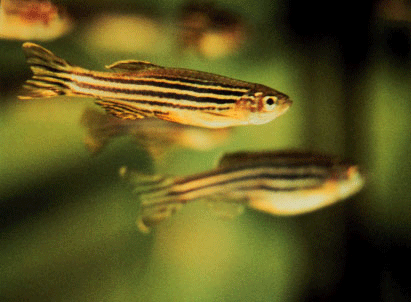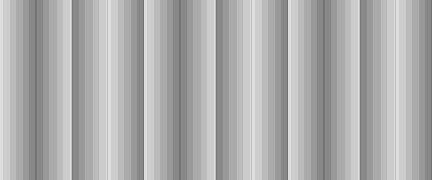 Zebrafish
Zebrafish
with Michael Orger, Mattew Smear, and Herwig Baier (UCSF)
Zebrafish Larvae Respond to Second-Order Apparent Motion
A moving grating elicits innate optomotor behavior in zebrafish larvae; they swim in the direction of perceived motion. We took advantage of this behavior, using computer-animated displays, to determine what attributes of motion are extracted by the fish visual system. As in humans, first-order (luminance-defined or Fourier) signals dominated motion perception in fish; edges or other features had little or no effect when presented with these signals. Humans can see complex movements that lack first-order cues, an ability that is usually ascribed to higher-level processing in the visual cortex. Here we show that second-order (non-Fourier) motion displays induced optomotor behavior in zebrafish larvae, which do not have a cortex. We suggest that second-order motion is extracted early in the lower vertebrate visual pathway.
Ted Adelson’s apparent motion of a square wave minus its fundamental. Features (such as edges) move to the right but Fourier motion energy moves to the left. Result: Humans see motion to the left. So do zebrafish, responding to the Fourier motion energy, even though they have no cortex but only a primitive optic tectum.
[quicktime width=”500″ height=”300″]http://quote.ucsd.edu/anstislab/files/2012/11/zebrafish3.mov[/quicktime]
In this second order stimulus the moving bars are defined only by texture, not by luminance; on each frame, every 8th column reverses in contrast. There is no rightward motion energy, yet zebrafish will swim along to follow this stimulus.

